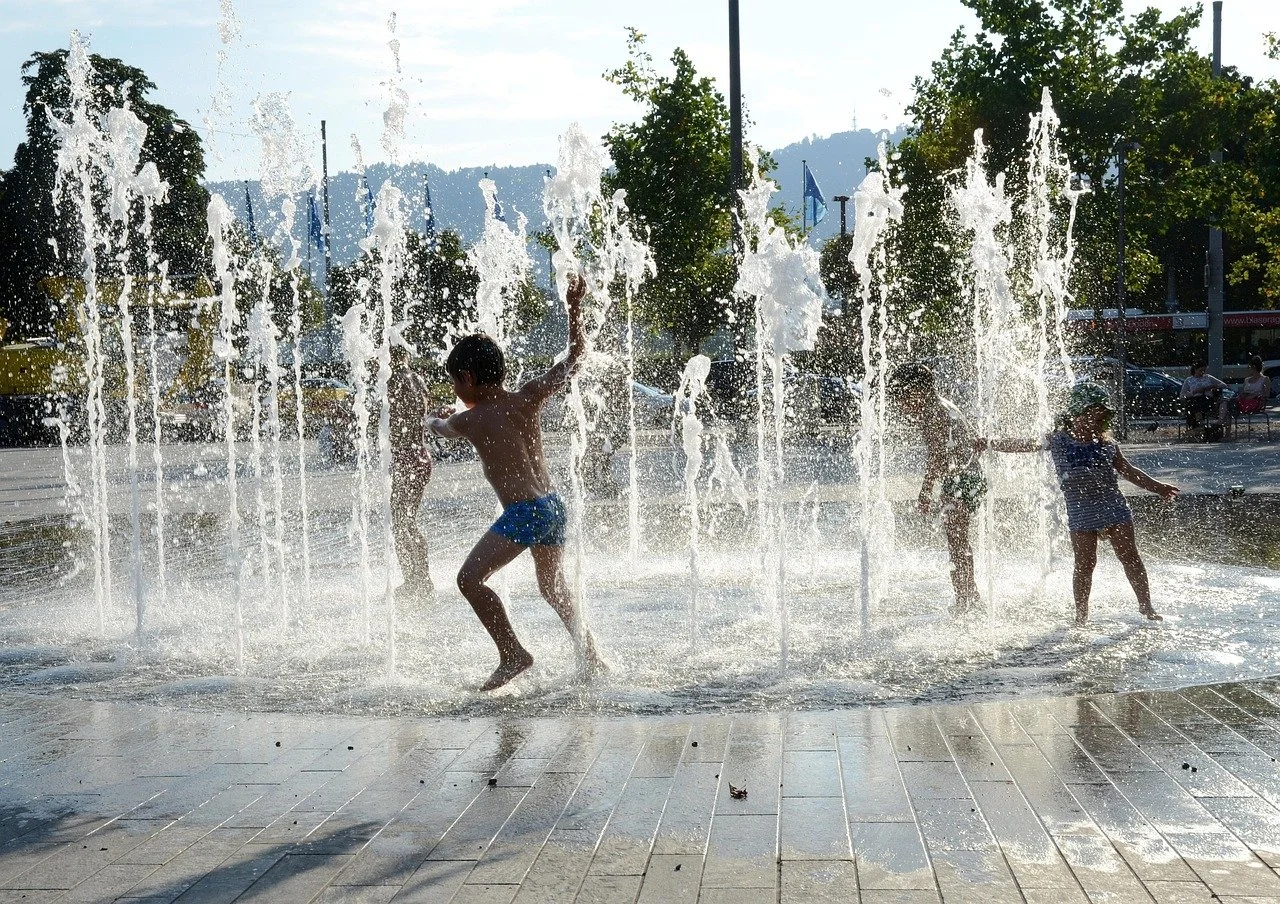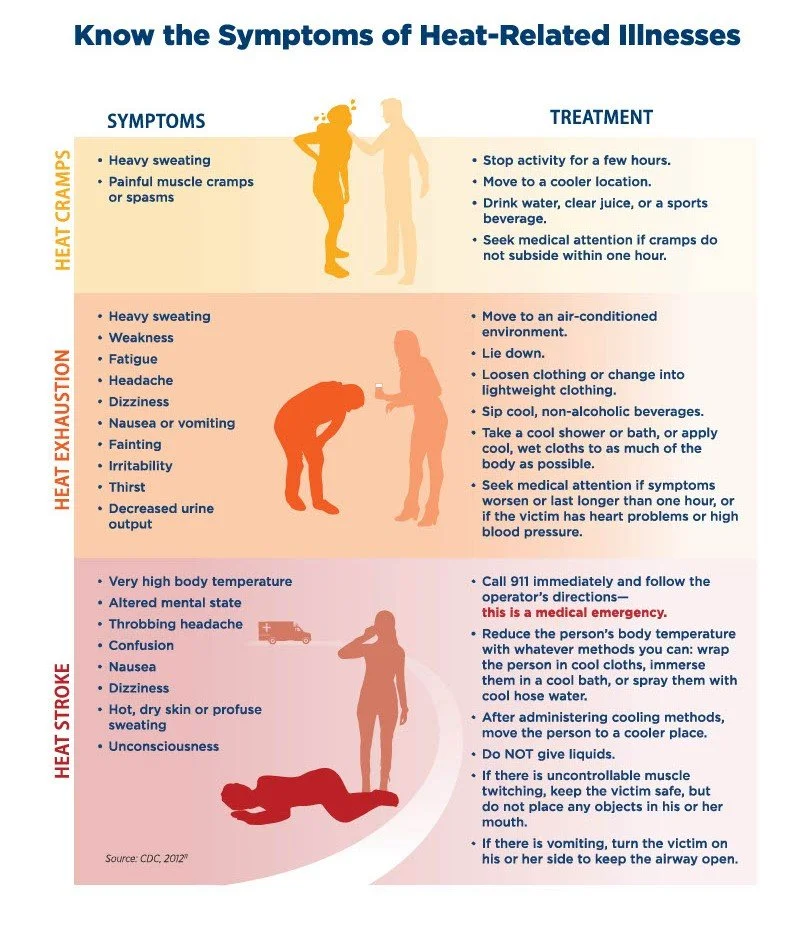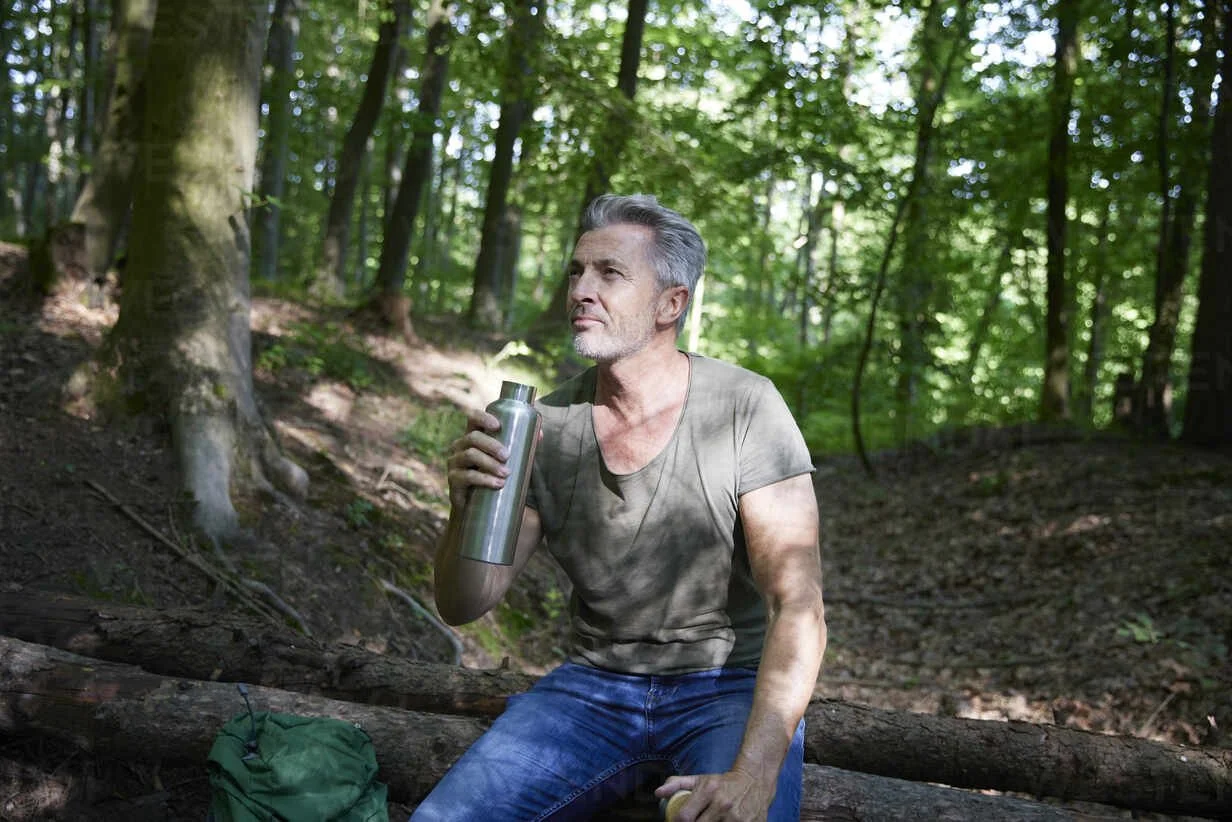Dangers of Wet-Bulb Temperatures and Humid Heat
The deleterious effects of anthropogenic global heating will get worse for generations.
Wet-bulb temperature is the lowest temperature to which air can be cooled by the evaporation of water into the air at a constant pressure. It's a measure that takes into account both temperature and humidity.
When the wet-bulb temperature, which accounts for both heat and humidity, rises to extreme levels (around 95°F or 35°C), the human body's primary cooling mechanism—sweating and subsequent evaporation—becomes ineffective. Usually, sweat evaporates from the skin, carrying heat away from the body and cooling the core. However, in high humidity, the air is already saturated with moisture, preventing sweat from evaporating. This means that even if a person sweats profusely, their body temperature will continue to rise unchecked. As core body temperature climbs above the safe range (around 98.6°F or 37°C) towards dangerous levels (104°F or 40°C and above), the body's organs begin to shut down: the cardiovascular system is overworked, the brain struggles and cells start to break down, ultimately leading to heatstroke, multi-organ failure, and potentially death if not rapidly cooled.
While cold water may feel more refreshing in extreme heat, especially during wet-bulb conditions, drinking room-temperature water is generally considered better for overall hydration and effective body cooling for most individuals. This is because your body must expend energy to warm very cold water to its core temperature (around 37°C or 98.6°F) before it can be efficiently absorbed into the bloodstream. This process can slightly delay rehydration. Room temperature water, being closer to your body's internal temperature, is absorbed more rapidly and efficiently, allowing for quicker rehydration and replenishment of fluids lost through sweating. Although some research suggests that cold water may have a temporary cooling effect, especially for athletes, prioritizing rapid and efficient fluid absorption by consuming room-temperature water helps your body maintain its critical fluid balance and support the crucial sweating process without additional physiological strain.
The World Meteorological Organization's description of heat exposure as a "silent killer" is apt. Unlike dramatic natural disasters, extreme heat often leads to gradual physiological decline, and its victims may not be immediately obvious.
Scary statistics:
The WHO reported that over 175,000 people die annually from heat-related causes in the European region, with numbers expected to rise.
The Hajj pilgrimage in Saudi Arabia saw over 1,000 deaths due to extreme heat. In Mexico, thousands of cases of heatstroke and dehydration were reported during a heatwave. And in India, eight deaths were reported in just 72 hours during their most prolonged heatwave on record.
The National Weather Service reports that heat kills more people on average than other weather-related events, such as hurricanes, tornadoes, and lightning.
Heatwaves are among the most dangerous of natural hazards, but they rarely receive adequate attention because their death tolls and destruction are not always immediately apparent. A study found that from 2000 to 2019, approximately 489,000 heat-related deaths occurred each year, including more than 70,000 who died during the 2003 heatwave in Europe.
Remember that the elderly, very young, outdoor workers, those with pre-existing medical conditions, and individuals without access to cooling are particularly vulnerable.
The Inevitable Rise of Global Temperatures
The world will not cool down for centuries, and each year, the world's average temperature will rise, along with all the complex changes and feedback loops this portends within habitats. This is well understood and demonstrated by climate science, physics, and biology, and is the grim truth.
I am sorry, folks, but technology, Aliens, AI, Religion, or Magical Thinking won’t step in and save us.
Even if greenhouse gas emissions were to cease immediately, the Earth's climate system would still exhibit significant inertia. The oceans, as one example, which have absorbed a vast amount of excess heat, will continue to release it back into the atmosphere for decades, if not centuries. This means a certain degree of warming is already locked in.
Climate science understands numerous positive feedback loops that can accelerate warming.
Examples include:
Ice-Albedo Feedback: Ice and snow are highly reflective surfaces (high albedo), bouncing sunlight back into space and helping to keep the planet cool. As global temperatures rise, this ice melts, exposing darker surfaces, such as land and the open ocean. These darker surfaces absorb more solar radiation instead of reflecting it, leading to further warming. This increased warming then melts even more ice, creating a self-reinforcing cycle that reduces the Earth's overall reflectivity and accelerates warming, especially in the Arctic, which is warming significantly faster than the global average.
Permafrost Thaw and Greenhouse Gas Release: Vast quantities of organic carbon (plant and animal matter) are frozen in permafrost, the permanently frozen ground found in Arctic and sub-Arctic regions. As the planet warms, this permafrost thaws, and microbes begin to decompose the trapped organic matter. This decomposition releases potent greenhouse gases, primarily methane (CH4) and carbon dioxide (CO2), into the atmosphere. Methane is an especially potent short-lived greenhouse gas. The increased concentration of these gases further warms the planet, which in turn causes more permafrost to thaw, creating another dangerous positive feedback loop.
Water Vapor Feedback: As the Earth's atmosphere warms, it can hold more moisture. Water vapor is itself a very potent greenhouse gas. So, as initial warming occurs due to other greenhouse gases (like CO2), more water evaporates into the atmosphere. This increased water vapor then traps even more heat, leading to further warming, which leads to more evaporation, and so on. This feedback loop is one of the strongest positive feedbacks and is estimated to roughly double the warming caused by increased carbon dioxide alone.
Forest Dieback and Reduced Carbon Sinks: Forests, especially vast ones like the Amazon rainforest and boreal forests, play a critical role as carbon sinks, absorbing significant amounts of CO2 from the atmosphere through photosynthesis. However, as temperatures rise, and droughts and wildfires become more frequent and intense, these forests experience increased stress, dieback, and burning. When forests die or burn, they release the carbon they have stored back into the atmosphere, turning from carbon sinks into carbon sources. This release of CO2 further accelerates global warming, reducing the planet's natural ability to remove carbon from the atmosphere and accelerating the overall warming trend.
The above examples are but a few, and it’s highly likely that we will learn about more positive feedbacks that have a negative influence on various habitats as the years pass.
The concern is not just the warming itself, but the unprecedented speed at which it's occurring. Natural systems and human societies struggle to adapt to such rapid changes.
Manifestations of Climate Change
The "heat dome" affecting 17 Mid-West states is a clear example of how atmospheric blocking patterns, potentially influenced by a warming Arctic, can lead to prolonged and intense heat events.
The Oregon mega-fire, which has burned over 100,000 acres, highlights the increasing frequency and intensity of wildfires, particularly in regions experiencing drought and higher temperatures. This is a direct consequence of a hotter, drier climate.
The Guadalupe River overflowing with "four months' worth of rain in just a few hours" exemplifies the paradox of a warming world: while some areas experience drought, others see more intense, albeit less frequent, rainfall events. Warmer air holds more moisture, leading to heavier downpours when conditions are right.
The link between extreme heat, increased AC demand, and power grid stress is critical. This can lead to brownouts or complete blackouts, exacerbating the dangers of heat. The concern about utilities shutting off lines during high winds to prevent fires is also a growing reality in fire-prone areas.
These issues signify broader, systemic environmental degradation. The decline of southern sea ice (Antarctica's fall) has global implications for sea levels and ocean currents. Groundwater depletion is a silent crisis, threatening food security and water access for billions, and is often exacerbated by increased irrigation demands in a hotter climate.
When living systems die, we die.
Societal and Political Inertia
The World Court's opinion and the repeated withdrawal from climate agreements speak to a deep frustration with the slow and often regressive political response to a widely acknowledged crisis.
More profits, more better, who cares about life on Earth?
The fact that climate change has been understood since well before 1972 (the date of the first UN Conference on the Human Environment) underscores the decades of inaction and missed opportunities.
The U.S. president's withdrawal from international climate agreements due to climate change being labeled a "hoax" highlights the significant political barriers to effective climate action, often driven by short-term economic interests, misinformation, and ideological resistance. This political paralysis exacerbates the already dire situation.
Survival and Adaptation
Prepare for extreme heat events from now on. Educate yourself while we are still plugged in.
Heat Escape Room: Creating a shaded, cool space with access to water is fundamental.
Power Resilience: The suggestion of solar panels, portable AC units, and battery storage addresses the critical need for independent power sources during grid failures.
Personal Health Measures: Avoiding exertion, alcohol, eating light meals, and staying hydrated are essential physiological adaptations.
This Existential Threat Will Be With Us For Generations
Among all the life-threatening issues humanity faces, none compare to the ever-growing and increasingly threatening dangers of the current climate crisis. We could disarm and advocate for peace, reduce inequality, build a more just society, etc., but global heating is just getting started. The climate crisis is not just an environmental issue; it is an existential threat that touches every aspect of human life, from health and food security to economic stability and social order. This very hot summer is the new normal. Without drastic and immediate global action, the challenges outlined will only intensify in the coming centuries.
Anthropogenic Global Heating is another cause of ecocide. The heat affects all living systems.
This reality profoundly affects you and your friends, family, and dependents. And remember, none of us could survive without all the people in our communities, and our communities are dependent upon communities worldwide for their conveniences and comforts, for their food and security. And all humans are dependent upon complex living system with emergent properties.
You can not survive alone. We are in this together.
These websites have more information. There are many more. Use your web-based resources while you can. Keep hard copies of vital information in a safe, waterproof, and fireproof place. Learn to rely upon and contribute to community experts. Build relationships with your natural surroundings, animals, and the people around you. Build a local sharing economy now while building trust with people is still possible.
https://www.pbs.org/newshour/health/what-to-know-about-heat-stroke-symptoms-and-how-to-stay-safe-during-heat-waves
https://earth.org/silent-killer-understanding-the-risks-of-extreme-heat-part-1/
https://www.who.int/news-room/fact-sheets/detail/climate-change-heat-and-health
https://skepticalscience.com/climate-inertia.html
https://www.climaterealityproject.org/blog/how-feedback-loops-are-making-climate-crisis-worse
https://npolar.no/en/fact/albedo/
https://www.jpl.nasa.gov/news/nasa-helps-find-thawing-permafrost-adds-to-near-term-global-warming/
https://earthobservatory.nasa.gov/features/OceanCarbon
https://apnews.com/article/megafire-wildfires-oregon-cram-fire-9aec4a2ac9ed8a43446e866b31b0985b
https://www.pbs.org/weta/roughscience/series2/challenges/weather/page4.html
https://sealevel.nasa.gov/understanding-sea-level/global-sea-level/ice-melt/
https://samueli.ucla.edu/climate-change-increases-crop-water-demand-in-san-joaquin-valley-exacerbating-shortage-on-groundwater-supplies/
https://apnews.com/article/un-court-opinion-climate-change-1ac84a94a5aaffd63518ef1da3502a9e
https://sustainabledevelopment.un.org/milestones/humanenvironment
https://www.osha.gov/emergency-preparedness/guides/heat-stress



